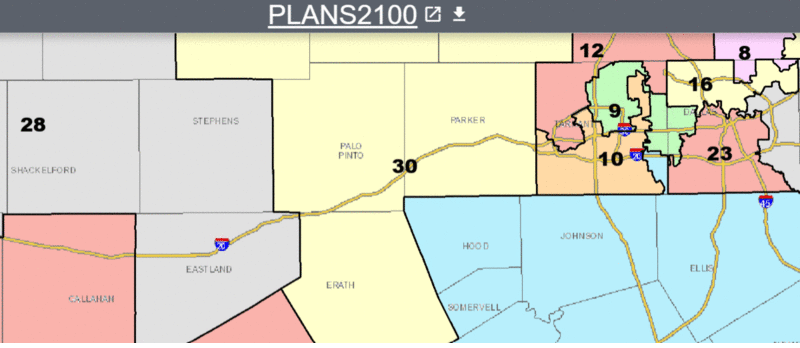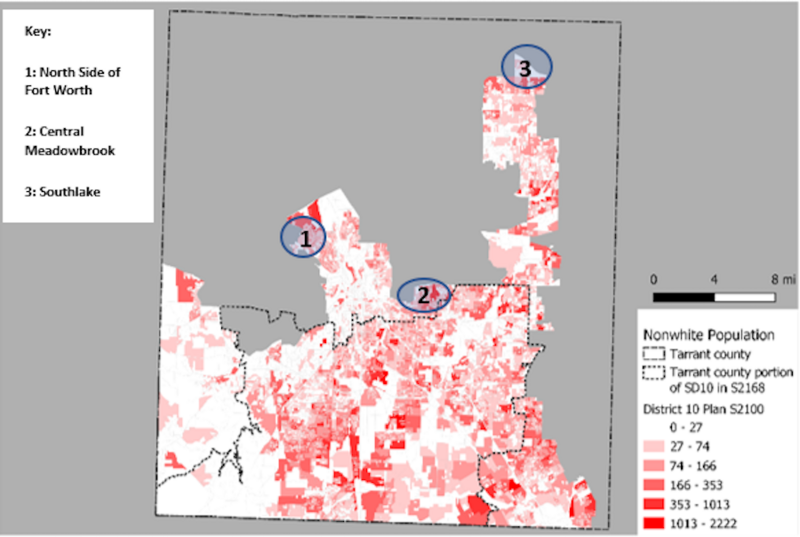In 2012, a federal court blocked Texas Republicans’ attempt to dismantle a state senate district in Tarrant County after finding that GOP map drawers had intentionally discriminated against Latino and Black voters. This should have signaled to Republicans to be cautious this decade when redrawing the district. Yet remarkably, they have thrown caution to the wind, passing an even more radical gerrymander of the district that once again targets the growing political power of communities of color.
Under the current map, Senate District 10 is a compact district wholly contained in Tarrant County and includes most of the city of Fort Worth. It is one of the state’s more diverse districts. Last decade, almost half of the county’s Latino population growth took place in SD-10, as did 36 percent of its Black population growth and 32 percent of its Asian population growth.
Under the existing map, SD-10 is only 5,318 people (or just over half a percent) over the ideal district size of 940,178 — the fourth-smallest deviation among state senate districts. This difference is well within the legally acceptable range for state legislative districts, and Republicans — had they chosen — could have left SD-10 untouched. Instead, they performed radical surgery on the district, moving over 318,000 people out of SD-10 and replacing them with 328,000 people from seven heavily Republican rural counties. The new plan makes SD-10 almost 10 percentage points more white than the current map.

The changes to the district fall significantly along racial and ethnic lines. For example, 42 percent of the people moved out of SD-10 and into SD-9 are Latino. In contrast, 66 percent of the people moved from SD-22 into SD-10 are white. In total, 73 percent of the people added to SD-10 from rural counties are white, while 55 percent of the Tarrant County residents moved out of SD-10 are nonwhite.
Significantly, the new plan moves several minority neighborhoods out of SD-10 into SD-9, including Central Meadowbrook, which is two-thirds Black and Latino; the North Side of Fort Worth, which is heavily Latino; and part of Southlake, which has a substantial Asian population.
At present, winning SD-10 — either as a Democrat or a Republican — requires appealing to a diverse, multiracial coalition of supporters. By contrast, in the new configuration of the district, election outcomes will likely be determined by white, heavily rural voters with very different representational needs from the urban and suburban voters who currently make up SD-10.

Texas has struggled to draw maps that treat communities of color fairly for the past half-century, first under Democratic and now under Republican control. But after a decade when communities of color accounted for 95 percent of the state’s population growth, it is more critical than ever that new maps provide communities of color with a seat at the table. The plan signed by Gov. Greg Abbott does not achieve this goal and should be seen for what it is: an effort to move the state backwards, not forwards.








